Latex paint is too thick for a sprayer and you must thin it or it will clog the sprayer of the nozzle.
To thin latex paint, pour it into a clean bucket, add the paint thinner compound, mix them, and test the mixture. Use a thinning ratio of 1:4 (1 part thinner to 4 parts paint) or a thinning ratio of 1/2 cup of water to 1 gallon of latex paint.
You can use water, denatured alcohol, paint thinner, or Floetrol to thin latex paint. The preferred thinning compound is water.
What Ratio To Use To Thin Latex Paint?
To thin latex paint use a ratio of 1:4 (1 part thinning compound to 4 parts of paint) or a ratio of 1/2 cup of water to 1 gallon of latex paint.
Use the thinning ratio of 1:4 if you want to spray latex paint with a sprayer. Use a thinning ratio of 1/2 cup of water to 1 gallon of latex paint if you want to use a paintbrush or roller to apply it. So for 2 gallons of paint, you will need 1 cup of water (or 236 milliliters).
While thinning latex paint, add the thinning compound to the paint and not the other way around. First, pour the paint into a clean bucket, then add the thinning compound (water) so you can monitor the color and flow of the paint. You can over-thin the paint if you add the thinning compound and then add paint.
Note: You can also find the right ratio to thin it by checking the container. Most brands include the thinning ratio on the container.
What Can You Use to Thin Latex Paint?
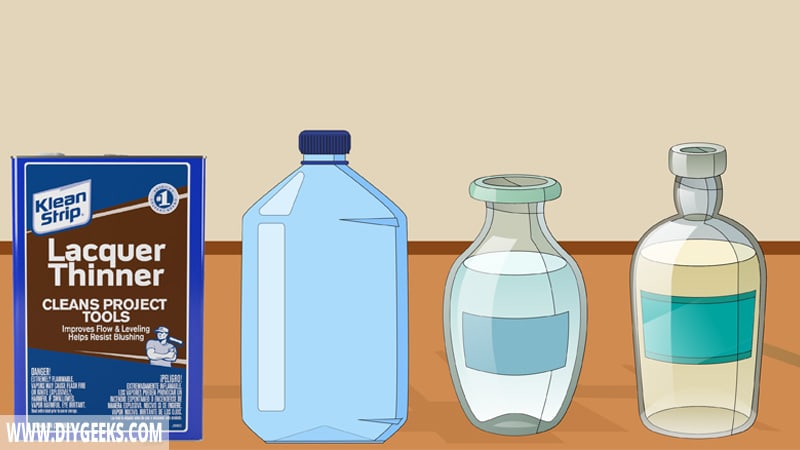
To thin latex paint use the following products.
1. Water
You can dilute latex paint with water as the paint uses water as its solvent. The amount of the solvent will increase if you add water to latex paint, making it thinner.
2. Denatured Alcohol
You can thin latex paint with denatured alcohol (small amount).
Don’t use too much denatured alcohol as it contains alcohol in high quantities and will ruin the paint by separating the pigments from the binder.
3. Paint Thinner
You can thin latex paint with water-based paint thinner.
Don’t use oil-based or petroleum-distilled paint thinner as it contains oil and will ruin the flow and color shade of the latex paint.
How To Thin Latex Paint?
To thin latex paint, do the following things.
- Open and Pour the Latex Paint.
- Add the Needed Paint Thinner.
- Stir the Mixture.
- Test the Mixture.
The tools you need for this project are listed below.
- Water-based paint thinner or water
- A paint mixer or turning stick
- A paint bucket
- Rubber gloves
- Latex paint
- Clean rags
1. Open and Pour the Latex Paint
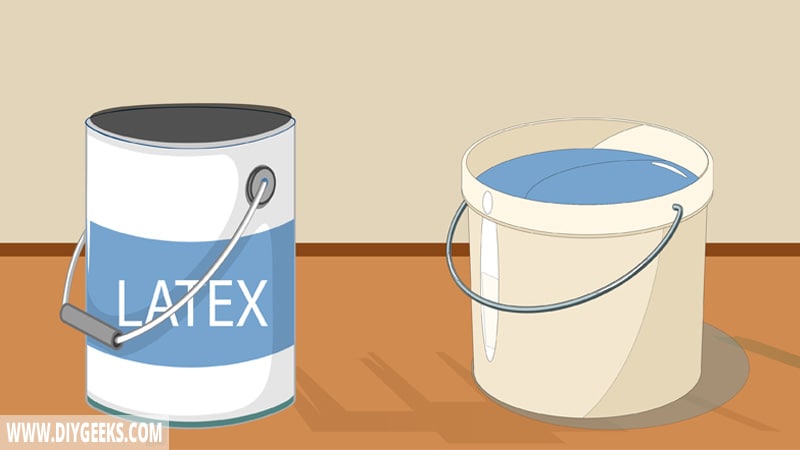
Pour latex paint into a clean bucket while measuring the amount you poured. The bucket must be clean and shouldn’t have oil-based paint residue as it can affect the flow and color shade of the paint.
You can dilute latex paint in its container too, but it’s easier to use a larger bucket because you have more space to work with.
2. Add the Needed Paint Thinner
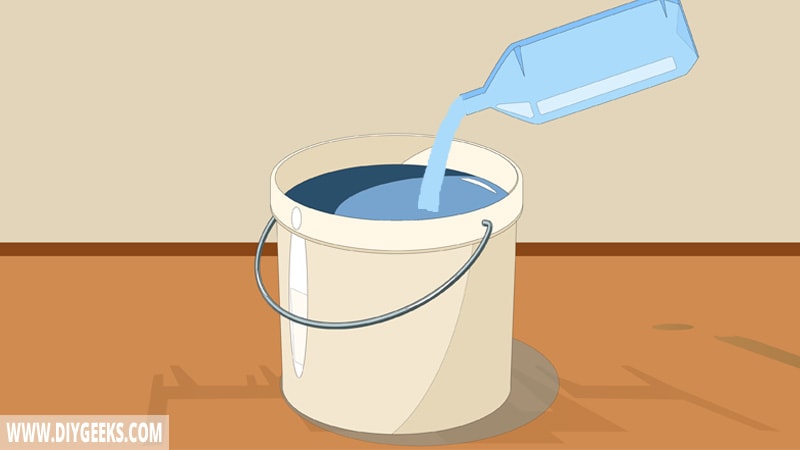
Calculate the amount of paint thinner based on the amount of latex paint you need to thin. You can use water, denatured alcohol, paint thinner, or Floetrol to thin it.
To thin latex paint for a sprayer, use a ratio of 1:4 (1 part paint thinner to 4 parts of latex), to thin it for a paintbrush or roller, add 1/2 cup of water for 1 gallon of it.
Latex paint must be thinner for a sprayer as it must fit the nozzle, while it doesn’t need to be as thin when using a paintbrush or roller to apply it.
To avoid brush marks, use Floetrol instead of water to thin latex paint. Add 4-8 ounces of Floetrol to a quarter of latex paint.
Note: Water-based paints have different flows based on the brand. So if you add the required amount of water, but it doesn’t seem thin enough, you can add more.
3. Stir the Mixture
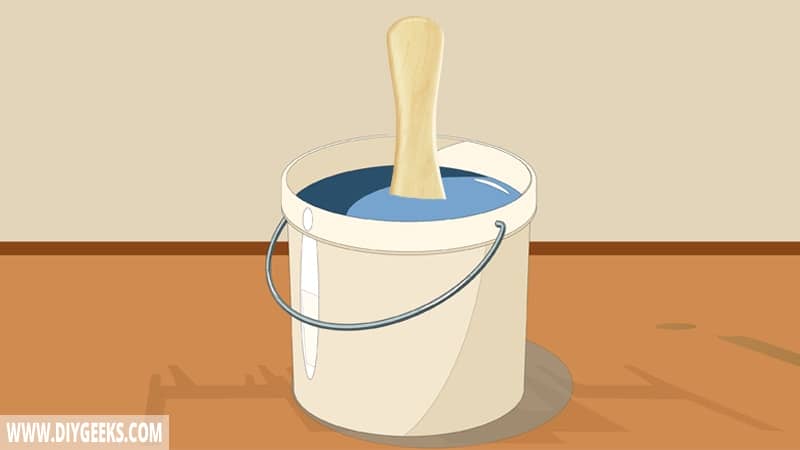
Stir the mixture after you add the paint thinner.
To stir the mixture, do the following things.
- Use a paint mixer or a turning stick.
- Stir the mixture for 5 minutes or until the mixture has an even flow and color.
- While stirring with a turning stick, ensure to press at the bottom of the container so the bottom of the paint mixes too.
You must stir if notice the water flowing on the paint, you can stop stirring once the paint has an even (or consistent) color shade.
4. Test the Mixture
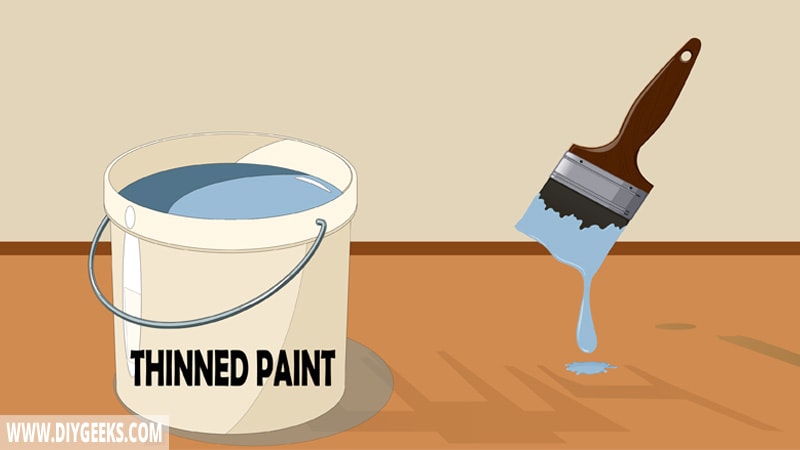
Test the thinned latex paint on a dispensable surface, such as cardboard or paper plaster, before using it on other surfaces.
You must add more water or paint if the mixture is too thick or thin than your likings. If the paint flow is consistent, dries well and fast, and the finish is smooth, use the thinned latex paint for other surfaces.
What Happens if You Over-thin Latex Paint?
If you over-thin latex paint, the following will happen.
1. The Paint Color Will Get Lighter
The paint color will get lighter the more water you add as the solvent ratio will be higher than the pigments ratio in the formula. You can add more paint to the mixture to avoid this.
A lighter color shade will make it more difficult to seal or cover existing finishes as it can’t cover the existing color shade.
2. The Paint Won’t Stick Well
The paint won’t stick well and may peel off if you over-thin it.
3. The Paint Will Drip
If there’s too much solvent (water) in the formula, the paint will lose its viscosity and thickness. So, when you apply it, it will drip on the floors, especially if you apply it on a vertical surface (such as a wall).
4. It Will Dry Too Fast
Over-thinner latex paint will dry too fast which means the paint particles won’t harden properly and the finish won’t adhere properly to the surface.
Related Read: Latex Paint Dry Time?


